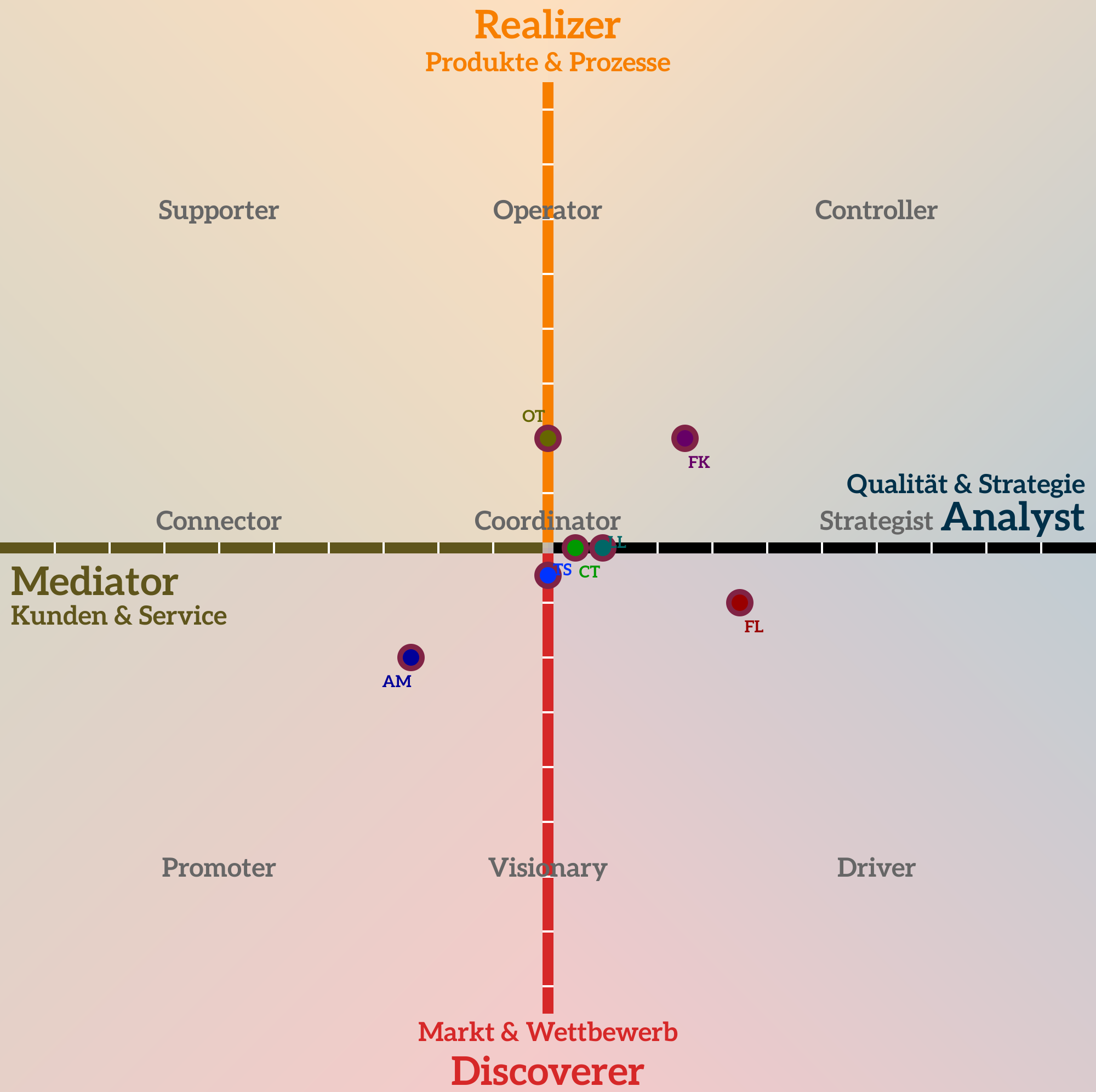New Work
Transformation processes in companies
How transformation processes in companies can be meaningfully supported with Team Compass.
The new constant is called change
In times of increasing globalization and digitalization, many companies are trying to get a grip on increasing complexity with new working models. New terms such as New Work or Agile Work are appearing in the vocabulary of those responsible. This is usually based on the realization that, above all, more flexibility is needed to keep pace with rapidly changing markets and products in order to remain successful. As a result, change or even transformation processes are initiated.
However, many of these processes fail.
Why?
Because they neglect the necessary changes in awareness and thus behavior of the people involved.
Is every change a transformation?
It makes sense to first take a brief look at the two terms:
A change is the adaptation to new circumstances. These can be improvements to existing processes or strategies, for example. The aim is to keep pace with developments while maintaining the fundamental structure and identity of the company. This makes the change more evolutionary.
When New Work is the goal...
What New Work is
New Work describes a profound change in our working world towards completely new forms of work. These can be, for example, home office, mobile working, flexible working time models or coworking spaces and agile methods.
This new understanding of work is based on core values such as participation, freedom, independence and personal responsibility. Against this backdrop, the topic of leadership also takes on a whole new meaning. New Work is still a relatively new concept. The term was coined in 2004 by the sociologist Frithjof Bergmann. New Work experienced its boom as a result of the coronavirus pandemic.
The basic idea behind this concept is to combine professional development with the personal development of employees.

The transformation process - towards new working models
More and more companies are recognizing the need to introduce new working models. They want to counter the increasingly complex and constantly changing world with decentralized management and self-organized teams. Employees have been observing a change in values for years:
- Flexibilization of work in terms of time and place,
- self-realization,
- meaning of work
are becoming increasingly important.
In many traditional companies, collective structures in the form of rules and "clear announcements" are emphasized and have shaped the culture of cooperation, in some cases for decades. Some employees certainly find this obstructive and stressful. On the other hand, these structures also have their advantages. This is because they create a clear framework that provides orientation for employees.
People need orientation and security in order to find their way in the world and therefore also at work. This need varies depending on the personality traits of the individual. What provides orientation for one person may feel like a straitjacket for another.
If a transformation process towards New Work is imminent, the collective structures and thus also the orientation and security are initially destabilized. As a result, some employees will react with uncertainty and fear, which usually leads to resistance to the change.
Other employees, however, will be more enthusiastic, especially if they have a stronger need for freedom, growth and creative freedom. They see advantages and opportunities in the change.
An example from practice
The managing director of a service company with 35 employees found the idea of New Work promising for herself and her company. Her motivation was to generate new freedom for herself and at the same time give the employees greater creative freedom and more responsibility.
The employees had already expressed this wish several times in the past. It was supposed to be a WIN-WIN situation. So one day, after a brief announcement, the managing director more or less released the employees into self-organization. To her surprise, however, after a brief phase of euphoria, the team reacted with stress and great uncertainty.

What had happened?
After a short time, the employees realized that they were not yet "mature" in the sense of being stable enough to be able to use the new creative scope with confidence.
So the questions were:
- How can the individual employees and the entire team be empowered to be more capable of self-organization?
- And: How does self organization that matches the employees' skills look like?
What does this mean for the transformation to New Work?
If you tear down the external structures that have previously provided orientation and security for employees, you have to develop new approaches for employees to learn how to generate this security and orientation from within. This means that employees must first learn to become aware of their abilities, needs and interests.
Once they have mastered this on an individual level, the next step is to learn to communicate this in dialog with others in order to find their place in the team. At the collective level, it is important to clarify the degree of autonomy and belonging, among other things.
For teamwork to work, it is important to generate clarity about how much freedom (self-organization) is reasonable for individual employees. Reasonable means the degree that the individual can handle well at the beginning in order to develop personally from this point of view.
How Team Compass can support employees and the process
Every change and especially every transformation requires an initial assessment of the current situation. If you want to set off on a mountain hike, you first determine your current location in order to describe the path from there to your destination.
Applied to a transformation process in the direction of New Work, this means first picking up the employee at their personal location. The aim is to help them become aware of their individual and fundamental personality traits, needs and potential. The Team Compass can provide excellent support for this reflection work.
The next step is to take a joint look at the collective. The Team Compass shows in an appreciative way how the individual [personality traits][models] affect teamwork - for example in terms of interactions, group dynamics and role behavior.

The graphic evaluations in particular make completed developments, unused potential but also areas of tension and limitations visible.
The Team Compass serves as a tool in such a transformation process to support and guide the necessary reflection and negotiation processes. It makes it easier for those involved to take a bird's eye view - i.e. the meta-level.
Self-organization requires self-reflection, both on an individual and collective level. However, it requires courage to express one's own feelings and needs. This is supported by the Potential Compass personality model on which Team Compass is based. This is because the model does not contain any evaluation in the sense of good or bad. At the same time, the model strengthens the understanding and acceptance that the other person is different from me.
Team members get to know and understand each other better with the support of Team Compass and joint reflection. Stumbling blocks are recognized more quickly and solutions can be found more easily and sustainably.
By making the skills of individuals visible, questions such as "Who can take the lead where and assume what responsibility?" and "Who needs what pace?" can be answered more effectively.

Finding the right balance or the dose makes the difference
The more external structures are torn down and the more responsibility is transferred to teams, the more inner security and maturity employees need.
New Work cannot be ordered. It is not a digital switching process that works at the touch of a button. Rather, it is an analog process - comparable to the above-mentioned mountain hike, which is ideally accompanied.
And as individual as the need for external structures and security is for individual employees, it is just as individual from company to company. It is important to find the right measure and pace, both individually and collectively. The Team Compass can support this process.
Making transformation processes safer and more sustainable
If you also support transformation processes in the area of New Work, you will find our Team Compass a scientifically sound personality tool with which you can expand your range of methods and carry out your process support even more effectively. With our Professional or Premium memberships, you can choose the form of cooperation that best suits your needs.
Do you have any questions? Please feel free to contact us!
